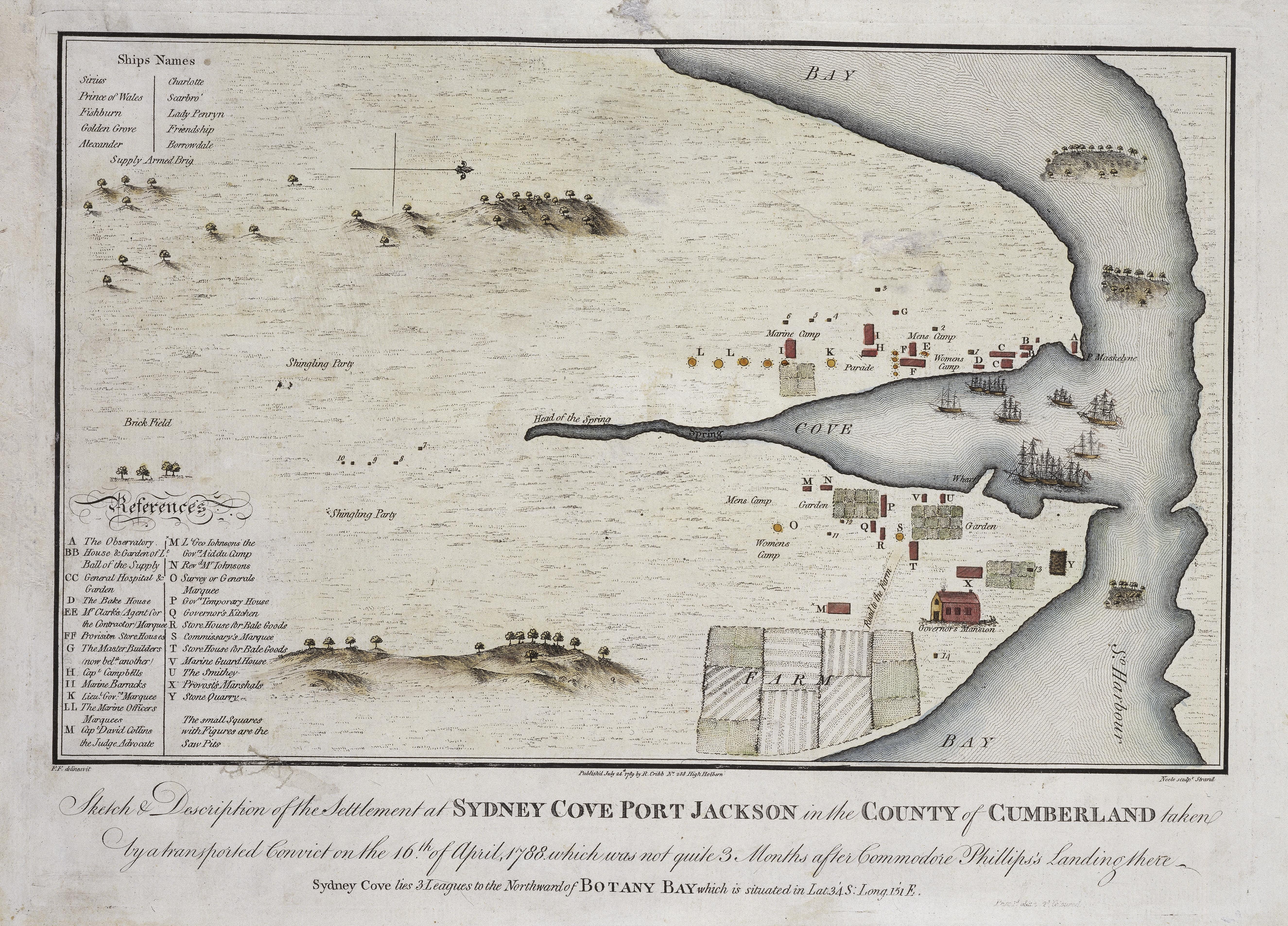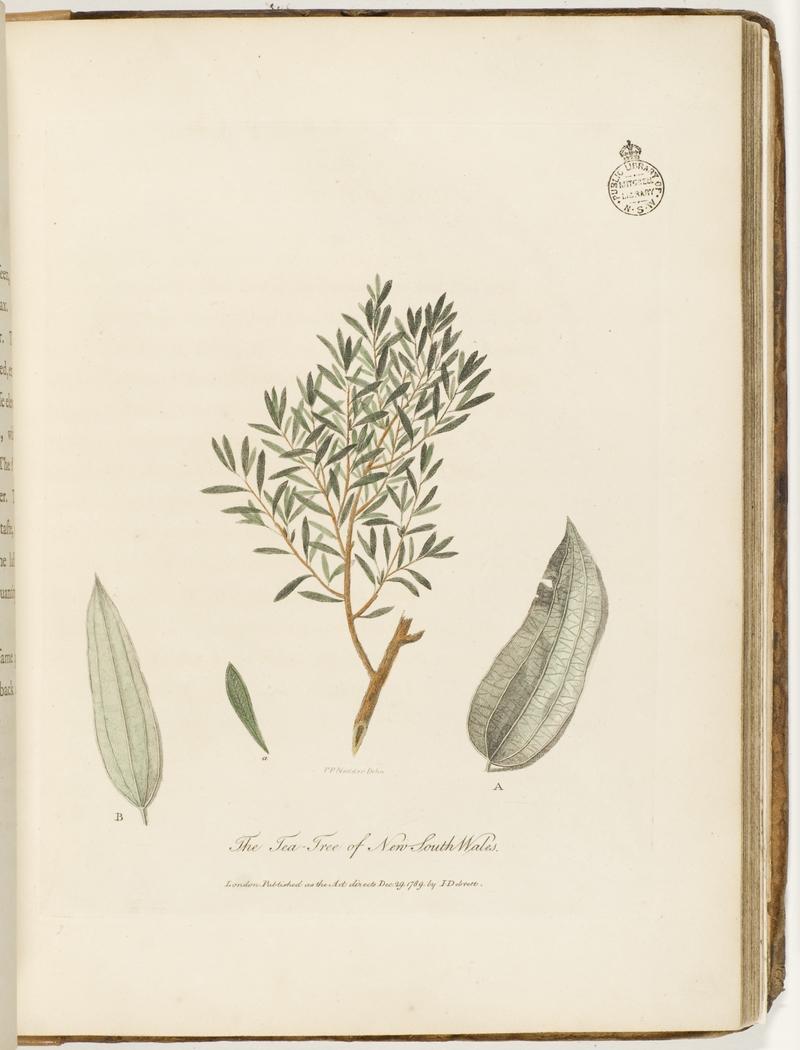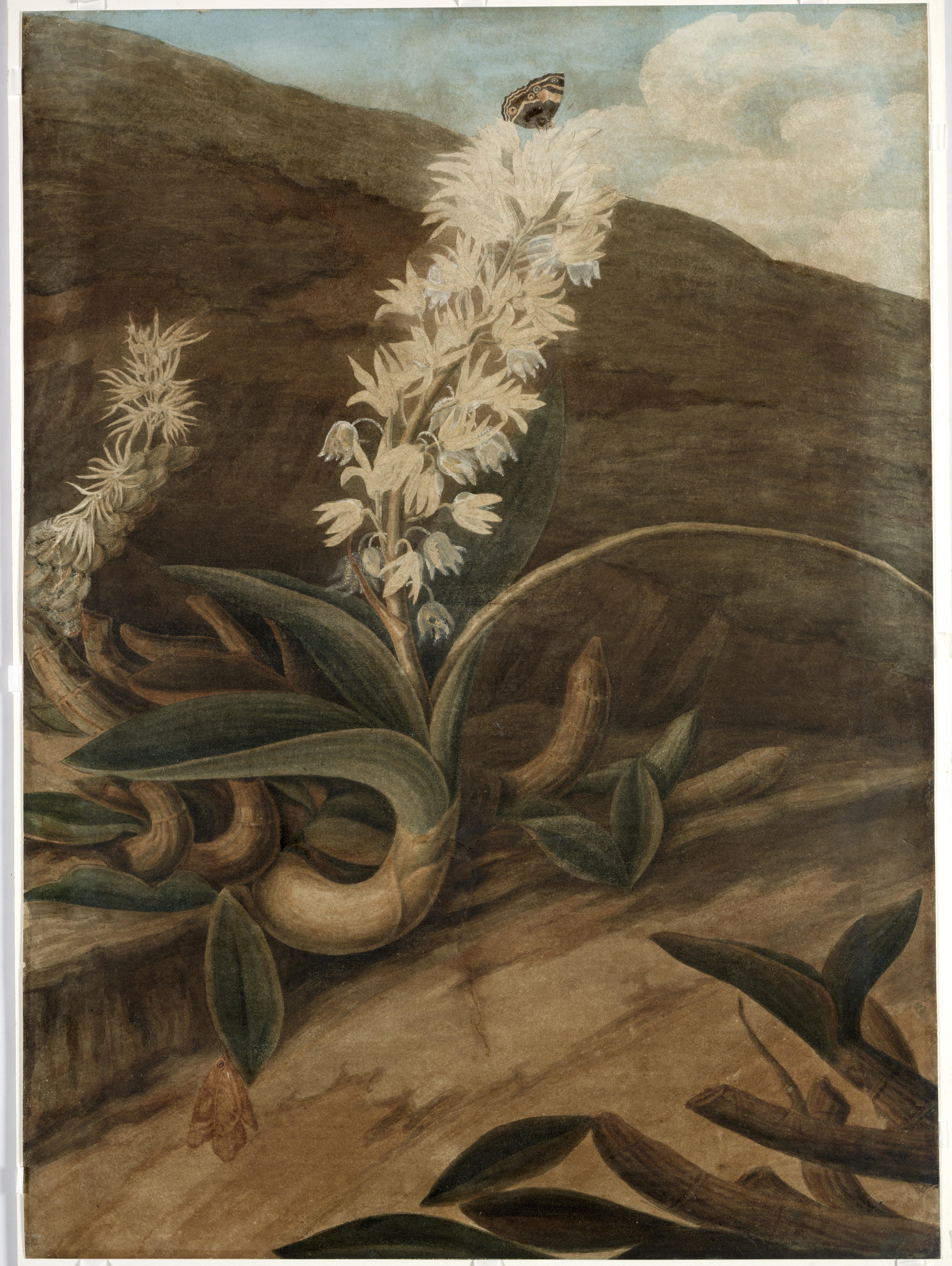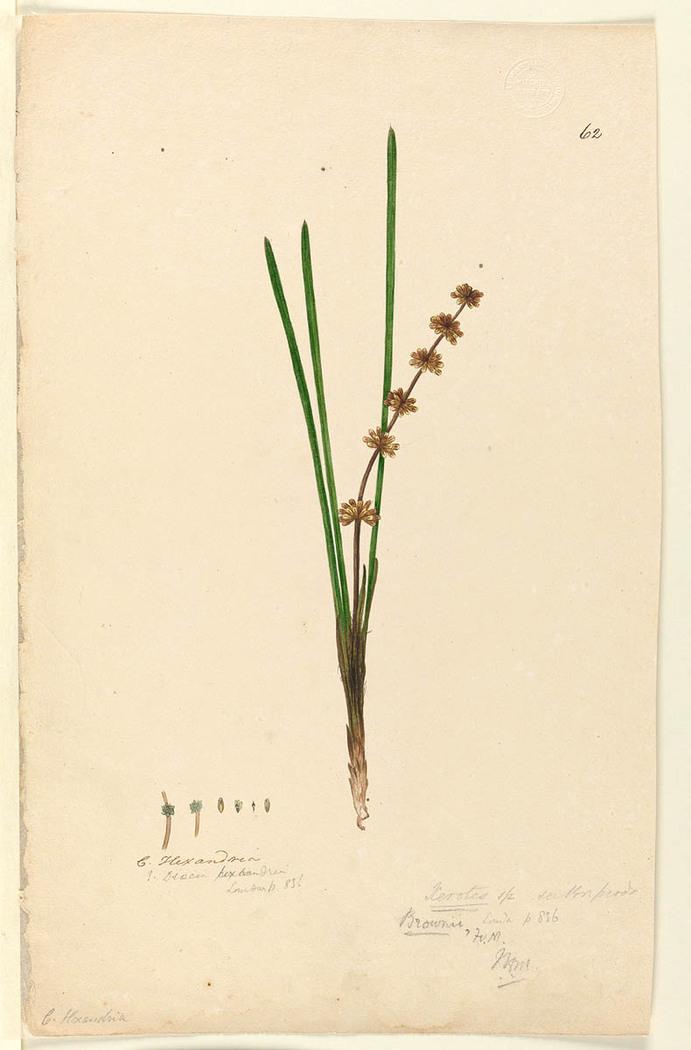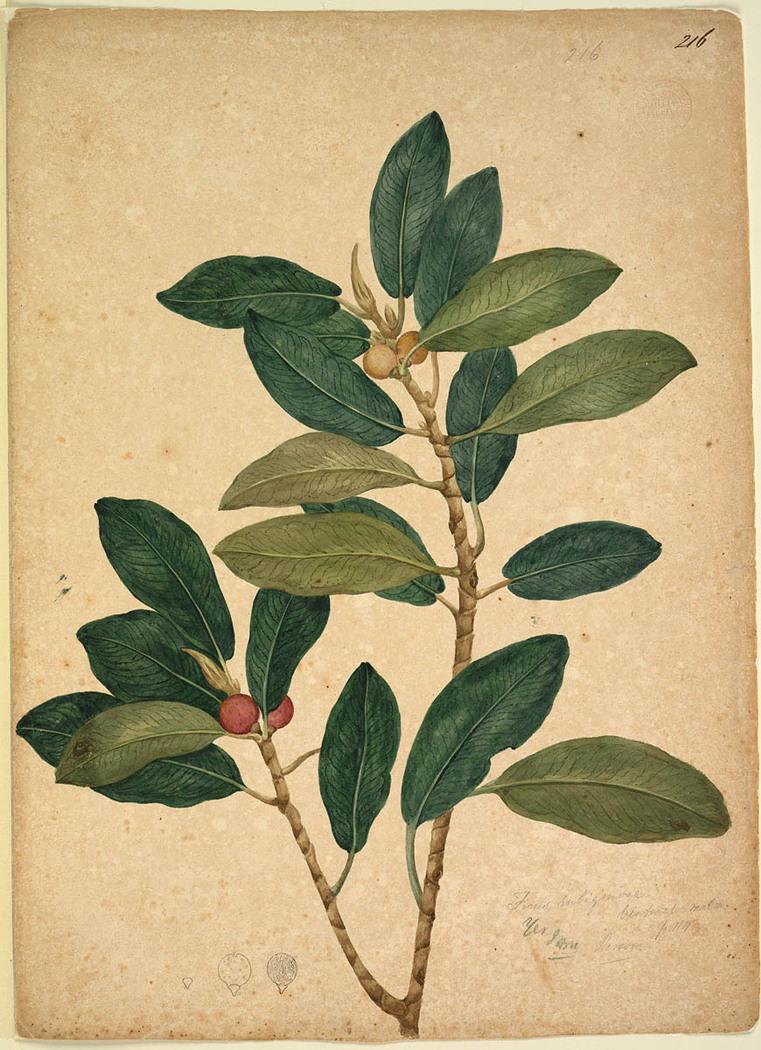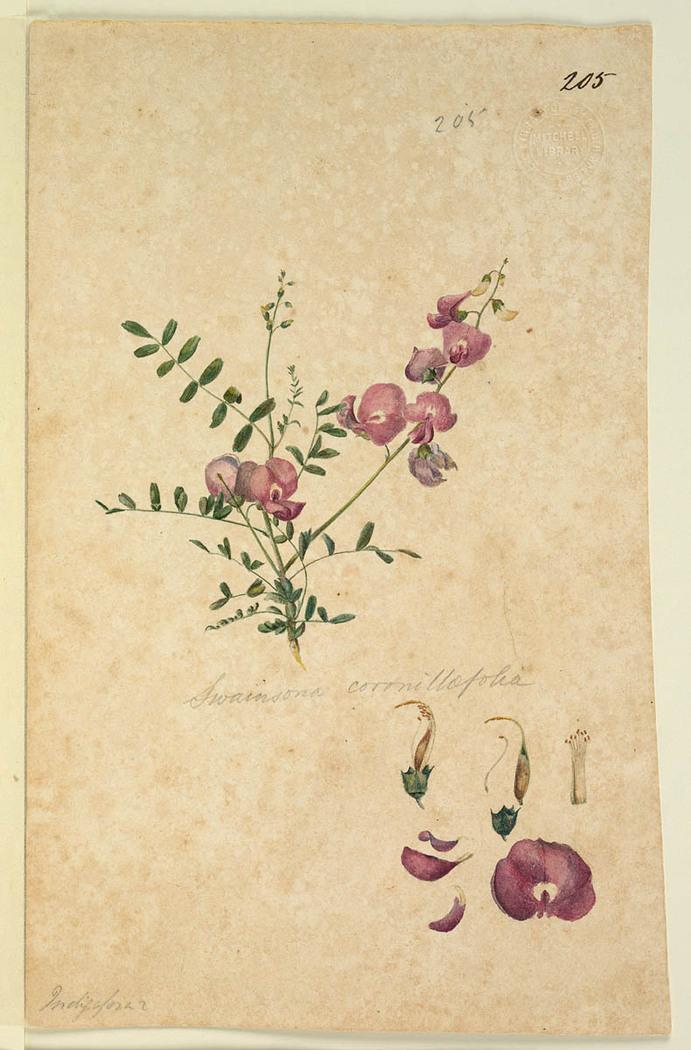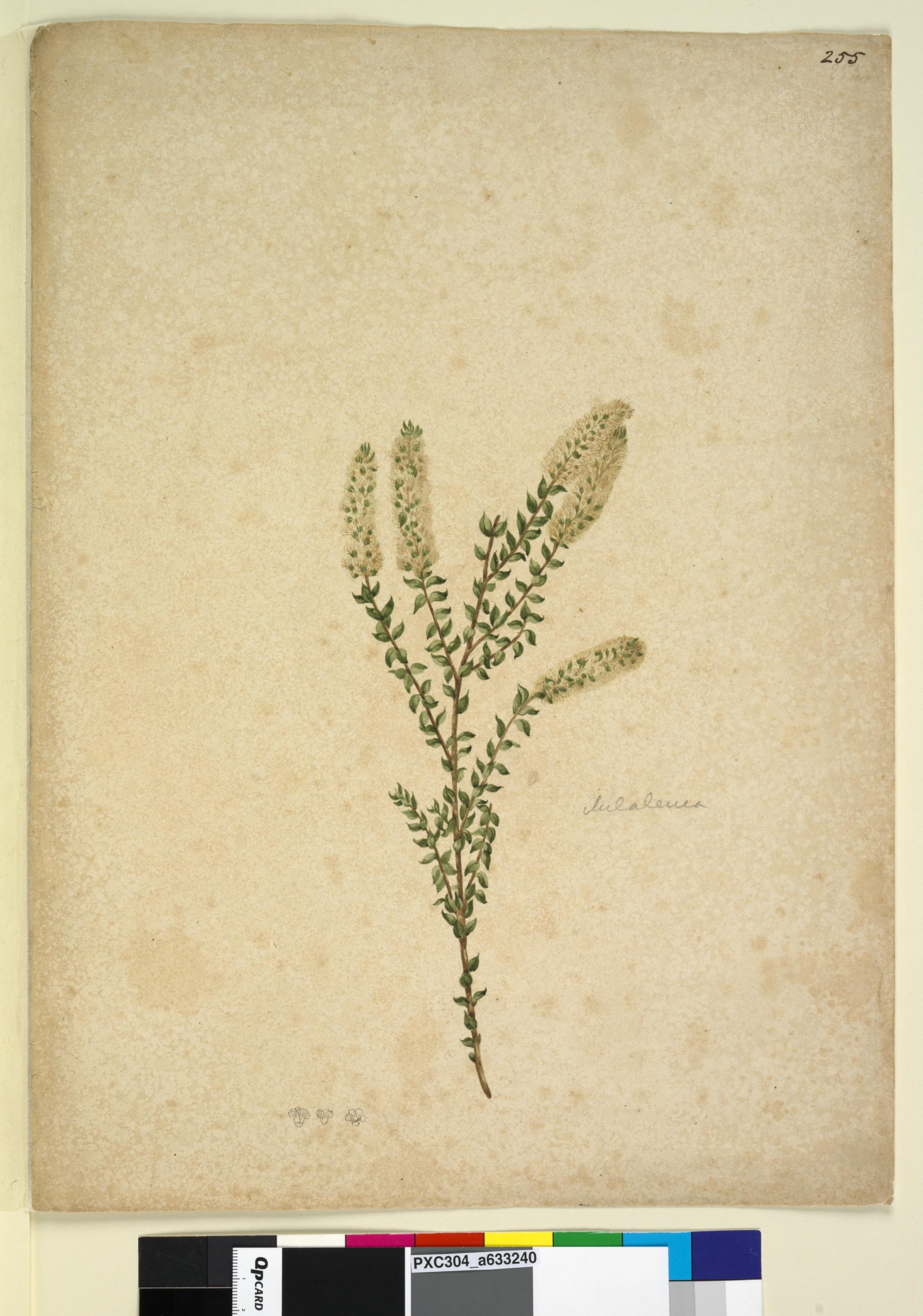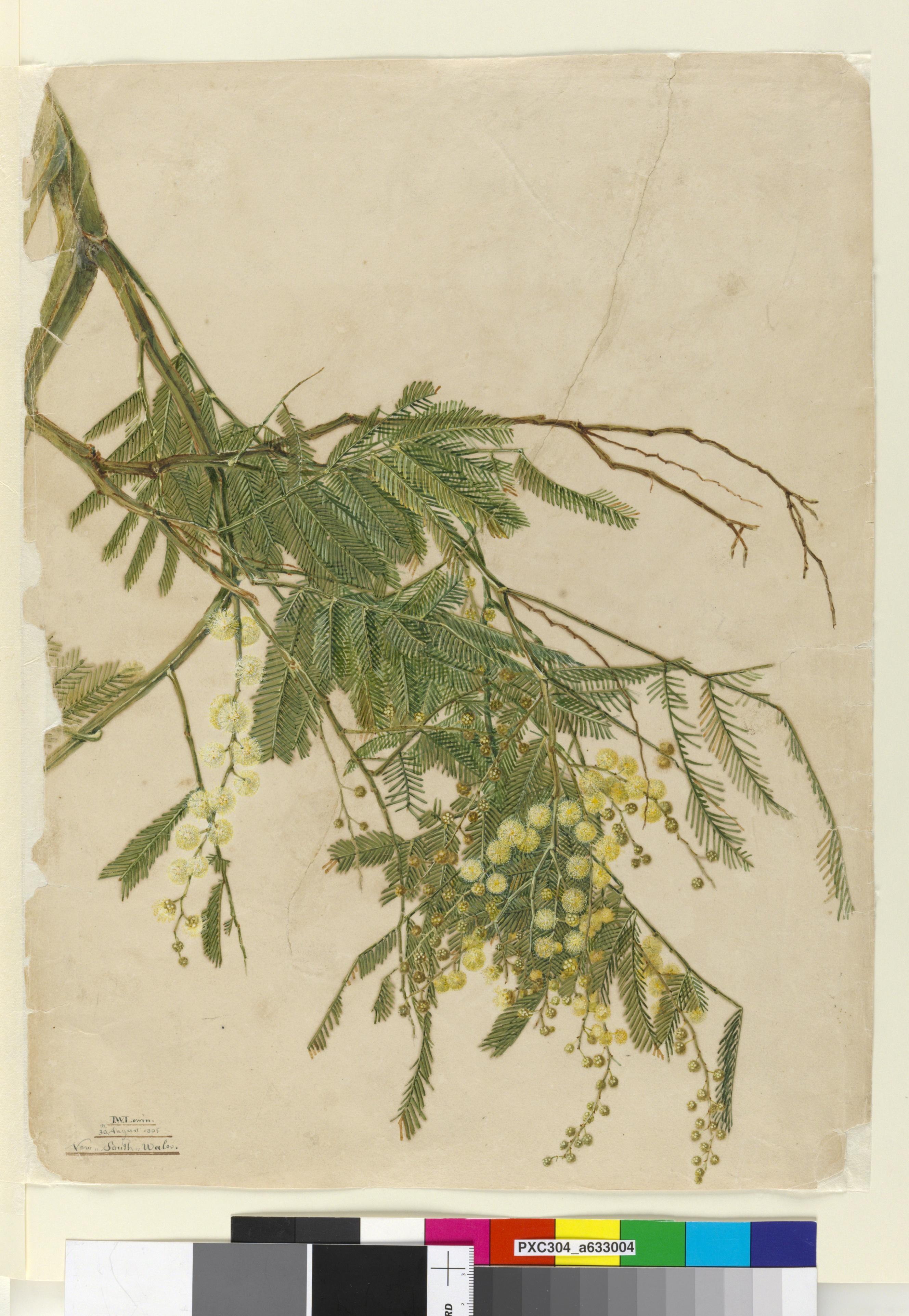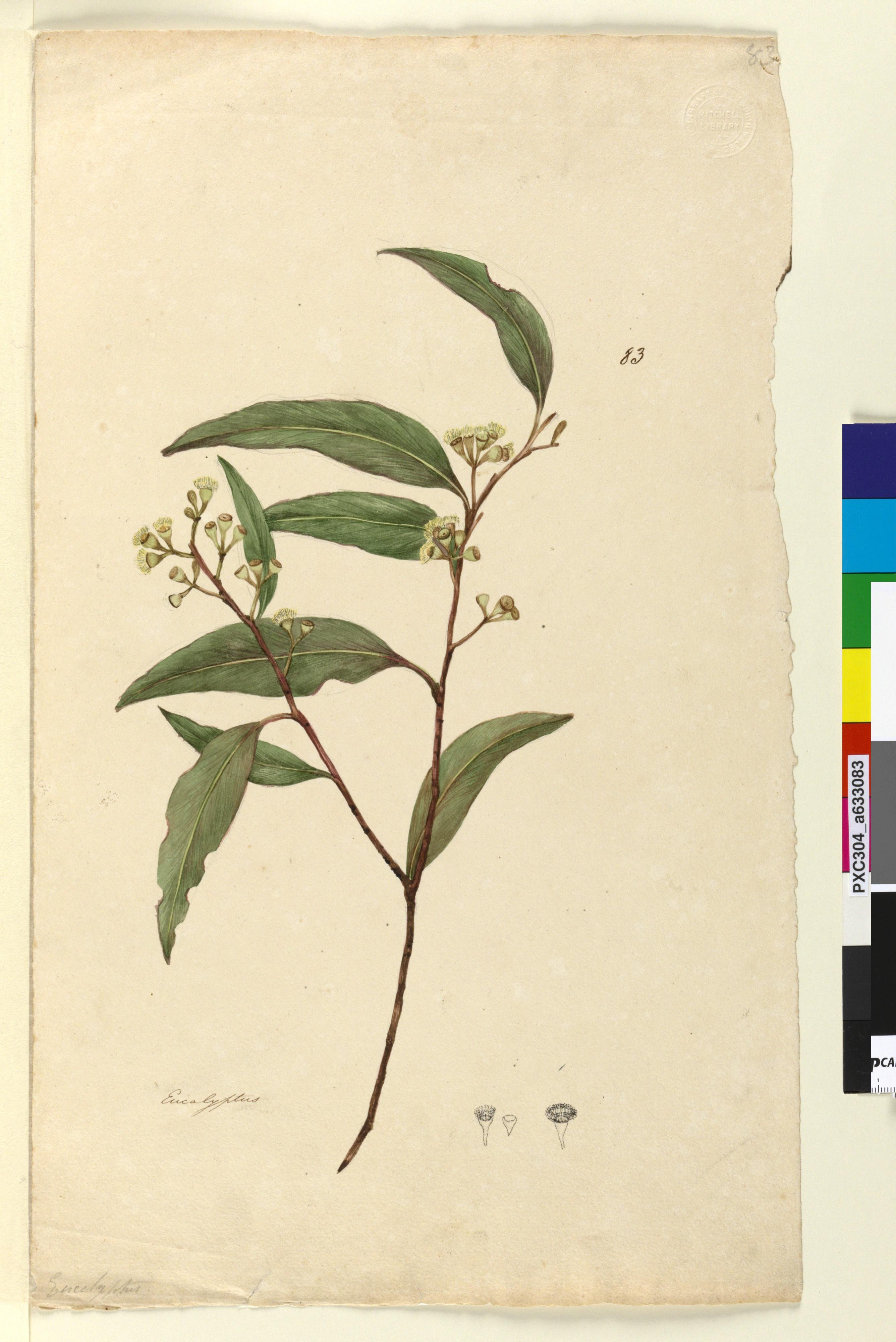Disease and medicine
Students research colonial diseases and compare the medical treatment of both the colonists and Aboriginal people.
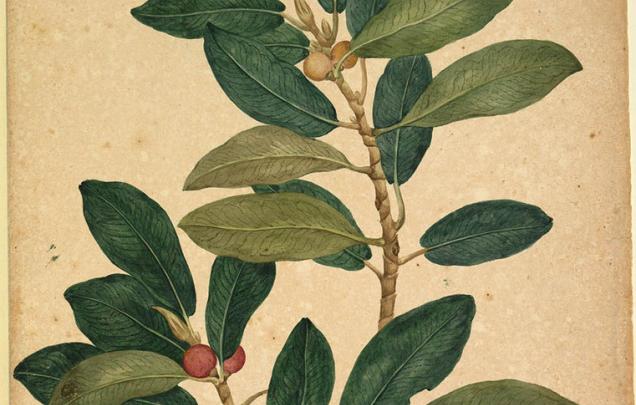
Disease and Medicine
Teachers note: Print Resource 1: Hospital Medical Reports.
A tent hospital was built on the western shore of Warrane/Sydney Cove in late January 1788.
Find the hospital on the map. This map was drawn by convict Francis Fowkes on 16 April 1788, just a few months after the First Fleet had arrived.
Answer this question:
- Why do you think the hospital was built on the opposite shore to the Governor’s ‘Mansion’ and houses of other officials like the Judge Advocate? [Suggested answer in Additional Information.]
Read what Surgeon John White, who was in charge of the hospital, wrote on 29 January 1788, three days after arrival of the First Fleet.
The laboratory and sick tents were erected, and, I am sorry to say, were soon filled with patients... More pitiable objects were perhaps never seen. Not a comfort or convenience could be got for them besides the very few we had with us.
Answer these questions:
- What could the comforts and conveniences be? [Answer in Additional Information.]
- Why were there very few of them?
If you have you been to hospital, choose 3 words to describe the hospital you visited. Compare this modern hospital with the First Fleet tent hospital.
Many of the First Fleet convicts arrived in the new colony healthier than when they had left England. Some of the convicts had come from lives of extreme poverty and deprivation, and had been living in poor conditions on the hulks or in prisons, but with the fresh air, exercise on deck and a regular diet on board ship, supplemented by fresh food when in port, their health improved.
Once in the colony however, disease was recorded amongst the colonists within a month and many ended up in the hospital.
Read Judge David Collins’ extract from his journal in February 1788:
The scurvy, that had not appeared during the passage, now broke out, which, aided by a dysentery, began to fill the hospital, and several died.
Look at this detail of a handwritten letter and then read these words about illness and conditions, written by Captain James Campbell on 12 July 1788:


Our disorders are the Scurvy, Dysentery, Fever and Agues. The two last may be produced from our mens having but their Canvas Tents, now rotten, to keep them from the inclemency of the weather, and now, wet ground to lay themselves upon. The Scurvy proceeds from our Salt Provisions and all among us are, more or less, afflicted with it.
Read Marine Private James Scott’s comment from his diary in May 1789:
Marine Died at Rose Hill, (of the Flux).
And in August 1790,
The Convicts. Contineu to Die Very fast.
Note: Fever (or ague) is not an illness by itself, as it is a symptom of an illness or disease. We don’t know (just as the surgeons in 1788 did not know) what illness these recorded fevers/agues were a symptom of.
Research the diseases scurvy and dysentery. Work out which of these two diseases is also called the flux.
Answer these questions:
- What are the living conditions mentioned in James Campbell’s letter that were contributing to the ill health of the colonists?
- What other conditions might have been contributing to the spread of sickness?
- Was it just the convicts from the First Fleet who were suffering and dying from disease? Why?
The arrival of the Second Fleet in 1790 was a shocking sight to those who had travelled with the First Fleet. The Lady Juliana had left separately to rest of the Second Fleet and arrived with mostly healthy convict women. In contrast, the convicts on the other ships had been very badly treated. On the ships Neptune, Scarborough and Surprize 26% of convicts died on the voyage, and after their arrival a further 40% died within eight months. Only 25% arrived in reasonable health. Later, people would call this the ‘Death Fleet’.
Read Judge David Collins report of the arrival of the convicts from the Second Fleet in June 1790:
By noon the following day, two hundred sick had been landed… a scene truly distressing and miserable; upwards of thirty tents were pitched in front of the hospital… filled with people, many of whom were labouring under the complicated diseases of scurvy and the dysentery, and others… yielding to the attacks of an infectious fever.
It is believed that the infectious fever in 1790 may have been typhus fever. The First Fleeters were now exposed to other diseases brought out on the Second Fleet.
Research the disease typhus fever.
Look at this image of Warrane/Sydney Cove in 1794 just a few years after the arrival of the Second Fleet. The hospital is the long white building with the grey roof on the right. The thirty tents would have been built in the area between the wharf and the hospital in 1790. It seems calm and quiet in 1794.

Answer these questions:
- Which of the diseases mentioned (scurvy, dysentery and typhus fever) would have been life threatening?
- What impact would the arrival of the Second Fleet have on the First Fleeters, who had already been in Warrane/Sydney Cove for two years?
Medical practices at the time were unlike those today. In the 1700s some doctors would taste the urine of the patient to diagnose their illness! Wounds often became infected, and managing a patient’s pain was very difficult.
Governor Phillip sent a message to Britain in July 1788 saying he needed a supply of sugar, sago, barley, oatmeal, currents, spices, vinegar, portable soup and tamarinds – all for the hospital! Surgeon George Worgan had suggested in 1787 when they were planning the journey that they should bring the plant Peruvian Bark that was used in the treatment of fevers and malaria, but it was too expensive.
Read the list of medical supplies that Judge David Collins recorded in April 1790 that the HMS Supply was bringing back from Batavia.
…some necessaries for the hospital, such as sugar, sago, hogs lard, vinegar.
Research sago, tamarind and hogs lard.
Do they sound like medicine? That is how the First Fleet surgeons were using them!
Answer these questions:
- Which of the above food-related medicine do you think might have been an effective treatment and which ones not?
- If these items were not eaten as a medicine, how do you think it was used? Research these medical practices of the 18th century. [For assistance see Additional Information.]
- How might we use sugar, sago, hogs lard and vinegar today?
- Were the First Fleet doctors using drugs we are familiar with today, such as paracetamol or penicillin? Why?
The colonists also knew about the healing properties of some local plants.
Look at this drawing of a Native Sarsaparilla (Smilex glycophylla) plant from Surgeon John White’s book published in 1790.
Read what he wrote next to this illustration. Notice that the letter ‘s’ is printed as an ‘f’ at this time in history. Try to read it!

He says that the tea made from these sarsaparilla leaves is good for the scurvy. Sadly, the vitamin C content was lost in this drink due to the brewing of the leaves but he was also using the green berries from this plant to treat scurvy as the berries were full of vitamin C.
Aboriginal people also used food and plants as medicine. Aboriginal health was also maintained by eating well and ensuring a supply of fresh, clean water. If treatment was needed, healing was done in two ways, both spiritually and physically.
Look at these painted images of Australian plants. Darug people in the north west of Sydney used these plants in bush medicine.
Match the image of the plant with the medicinal use by Darug people:
[Answers in Additional Information.]
- The bark was soaked in water to soothe joint pain.
- The stems were chewed and then rubbed into burns, wounds and sores.
- The leaves were crushed and placed in your nose to clear a cold’s congestion.
- The oil was used as an inhalation for headaches, coughs and colds.
- The leaves eased pain by being tightly wrapped on the aching part of the body.
- The roots, stems and leaves were crushed into a warm paste or poultice and placed on the skin for treating swelling and bruises.
- The milky sap was used as a wound cover, similar to a band-aid.
Surgeon John White eventually became aware of the powerful properties of the Eucalyptus tree, although it’s remedial properties were already well-known to Aboriginal people. He used red gum taken from the trees for treating dysentery. He would also ask convicts to go into the bush to collect ‘herbs’.
Governor Arthur Philip had written to Britain for additional medical supplies but the colonists had to wait a long time for them to arrive. Poor health and the need for medical treatment was the reason that Governor Arthur Phillip had to return to Britain in 1792 himself, much earlier than expected. His illness? Nobody knows for sure, but one theory is that he had kidney stones from an excessive amount of salt (probably all that salted meat) in his diet.
Answer these questions:
- Does this information lead you to think the First Fleet surgeons were interested in learning about the Darug people’s bush medicine?
- Why might this have been the case?
We know there was some collaboration between the First Fleeters and local Aboriginal people but it is unknown if there was any shared learning about medical practices.
Imagine you are Surgeon John White, who was the head of the hospital from 1788. Complete the medical report on a sick convict. What is your diagnosis? What would you give as medicine? How would it be used? Have you any new treatments using Aboriginal medicine? Don’t forget to sign your report! [Use Resource 1: Hospital Medical Reports. Answers in Additional Information.]
